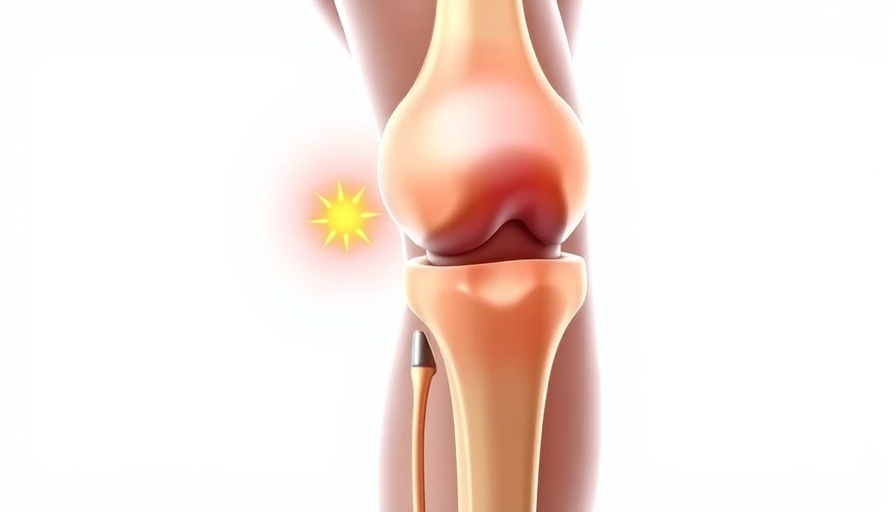
Understanding Knee Pain: The Silent Struggle
Knee pain is one of the most common ailments affecting millions of individuals around the world. It can stem from various conditions, including arthritis, injury, or even repetitive strain from everyday activities. As people age or engage in physical activities, the chances of experiencing knee pain increase. This issue not only limits mobility but can also severely impact daily life, making it essential to find effective methods for relief.
Gentle Exercises: A Path to Relief
Fortunately, simple, gentle exercises can offer significant relief from knee pain and improve overall joint function. These exercises foster strength, flexibility, and endurance without imposing undue stress on the knee. Here we explore nine effective exercises that can help you manage and alleviate knee discomfort.
1. Calf Stretch: Loosening Up Tight Muscles
Calf stretches are not just for athletes; they serve as an effective method to relieve sore knees. By enhancing calf flexibility, these stretches help reduce strain on the knee joint, which, in turn, decreases pressure and discomfort. Daily calf stretching can cultivate a sense of relief and increased mobility in those suffering from knee pain.
2. Wall Sit-Ups: Strengthening Supportive Muscles
Wall sits are a fantastic way of strengthening the muscles that support the knee joint, particularly the quadriceps and glutes. Unlike traditional exercises, wall sits are static, allowing you to build endurance in these crucial muscles while stabilizing your knee and reducing strain. A daily regimen of wall sits may provide profound improvements in overall knee pain and support.
3. Leg Extensions: Engaging the Quadriceps
Leg extensions, performed in a seated position, are incredibly beneficial for building quadriceps strength, essential for knee joint stability. By strengthening the quadriceps, individuals may potentially alleviate pain associated with conditions like osteoarthritis. Incorporating leg extensions into your exercise routine can be a proactive way to guard against future knee issues.
4. Step-Ups: Core Engagement for Better Stability
While traditional sit-ups can place pressure on the knees, step-ups promote core engagement and control, which provide stability while strengthening associated muscles. This exercise not only helps alleviate knee discomfort but also enhances overall core strength, making activities of daily living easier and less painful.
5. Leg Lifts: Building Quadriceps Support
Both side and straight leg lifts effectively bolster quadriceps strength, which helps mitigate knee strain. These exercises can be particularly beneficial for individuals experiencing mild to moderate knee pain or recovering from surgery. By reinforcing the muscles around the knee joint, leg lifts aid in recovery and pain management.
6. Heel and Calf Raises: Enhancing Balance and Stability
This dynamic exercise involves standing and lifting your heels while maintaining balance. Heel and calf raises serve two key purposes: strengthening the calf muscles and promoting joint stability. They are especially advantageous for those suffering from arthritis or knee joint discomfort, enhancing mobility and reducing pain.
7. Hamstring Curls: Targeted Strengthening
Hamstring curls target not just the knee but also contribute to improved stability around the knee joint. By engaging these muscles, individuals can reduce strain and enhance flexibility, helping to facilitate a better range of motion. This foundational exercise can be added easily to a home workout routine.
8. Squats: Comprehensive Strengthening
Squats are widely recognized as excellent exercises for building strength in relevant muscle groups without straining the knees. By focusing on proper form, individuals can effectively strengthen their quadriceps, glutes, and hamstrings, ultimately leading to reduced knee pain over time.
The Importance of a Consistent Routine
Establishing a routine that includes these exercises can significantly improve knee health. Gentle movements help prepare the knee for more strenuous activities, and increased muscle support enhances overall joint stability. It is essential, however, to consult with a healthcare professional before starting any new exercise regimen, particularly if you are managing chronic pain or recovering from an injury.
Take the First Step Towards Better Knee Health
When knee pain inhibits daily activities, addressing it through gentle exercises is crucial. Remember to listen to your body: if any movement exacerbates discomfort, stop and consult a professional. Adopting these exercises can help pave the way toward a more active, pain-free lifestyle, improving overall well-being.
 Add Row
Add Row  Add
Add 




Write A Comment